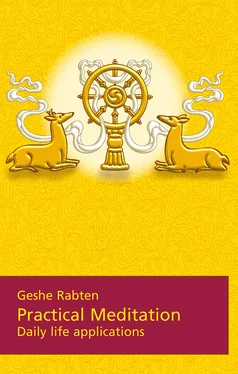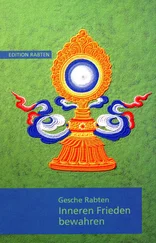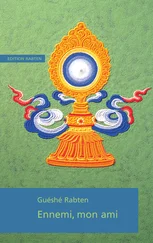Gesche Rabten - Practical Meditation
Здесь есть возможность читать онлайн «Gesche Rabten - Practical Meditation» — ознакомительный отрывок электронной книги совершенно бесплатно, а после прочтения отрывка купить полную версию. В некоторых случаях можно слушать аудио, скачать через торрент в формате fb2 и присутствует краткое содержание. Жанр: unrecognised, на английском языке. Описание произведения, (предисловие) а так же отзывы посетителей доступны на портале библиотеки ЛибКат.
- Название:Practical Meditation
- Автор:
- Жанр:
- Год:неизвестен
- ISBN:нет данных
- Рейтинг книги:3 / 5. Голосов: 1
-
Избранное:Добавить в избранное
- Отзывы:
-
Ваша оценка:
- 60
- 1
- 2
- 3
- 4
- 5
Practical Meditation: краткое содержание, описание и аннотация
Предлагаем к чтению аннотацию, описание, краткое содержание или предисловие (зависит от того, что написал сам автор книги «Practical Meditation»). Если вы не нашли необходимую информацию о книге — напишите в комментариях, мы постараемся отыскать её.
Practical Meditation — читать онлайн ознакомительный отрывок
Ниже представлен текст книги, разбитый по страницам. Система сохранения места последней прочитанной страницы, позволяет с удобством читать онлайн бесплатно книгу «Practical Meditation», без необходимости каждый раз заново искать на чём Вы остановились. Поставьте закладку, и сможете в любой момент перейти на страницу, на которой закончили чтение.
Интервал:
Закладка:
In developing the practice of meditation it is very important that we make proper preparations. If, for example, we want to build a house, we must first gather the necessary materials. Without this initial preparation any actual construction is impossible. Yet if these preparations are complete, the building can progress smoothly.
When we actually begin to meditate, it is important that we are able to recognize the various obstacles and interferences which may arise. If we are familiar with these, we can then take the necessary steps to prevent and eliminate them. One source of difficulty in meditation, in other types of Dharma practice and even in everyday activity arises in dependence on the six sensory consciousnesses or «doors», i.e. the visual, audial, olfactory, gustatory, tactile and mental consciousnesses. To avoid the obstacles which may arise from these, we must practice «guarding the six doors of the senses». This is done by utilizing the mental factors of mindfulness and alertness. In a general sense, these are the two most important factors used in the practice of meditation. When we work we use our hands, when we meditate we use mindfulness and alertness. The mental factor of alertness checks or analyzes our particular state of mind at any given moment. Its absence would severely diminsh the effectiveness of our actions. Mindfulness or recollection is, in fact, the principal agent used in guarding the sense doors. It can easily be recognized, for example, as that aspect of our mind which enables us to recollect, while sitting here, the furniture in our house. All of us have this mental factor as an aspect of our minds.
In our practice mindfulness enables us to remember our object of concentration and its various characteristics. Meditation would be impossible without mindfulness because we would loose the object. Even our daily activities would suffer without mindfulness because we would simply forget what it was we were doing. Therefore, for any successful meditation practice, mindfulness is indispensible in order to grasp the object of meditation. Furthermore, brief moments of mindfulness will not be sufficient. We must develop the ability to maintain continuous awareness of the object of meditation. By recognizing the advantages of mindfulness, how indispensible it is to successful meditation and the way in which it functions and aids our practice, we must develop a desire to actively cultivate this positive mental factor.
In practice, the way mindfulness is used to guard the doors of the senses is that each of the six senses are protected from their respective sensory objects. For example, we must control the eyes from random wandering towards any pleasing visual object which strikes our fancy. This process is not only applied to actual meditation sessions, but must also be carried over into all our daily activities.
In general, we can speak of three types of sensory objects: those which are attractive, unattractive and neutral. When we perceive an attractive sensory object, this causes pleasure to arise in our minds. In most cases, in dependence on this pleasurable experience, attachment arises. In guarding the doors of the senses, when we experience an attractive object with any of the six sensory perceptions, after the arising of the recognition of the attractiveness of the object, we must prevent the arising of attachment towards it. This is one of the functions of mindfulness. We do so, by holding the mind in an alert state as we perceive an attractive object and by recollecting how easily attachment can arise. Aware of this danger, we can prevent attachment from actually arising. This way of stopping attachment is equally applicable to any of the six senses.
Usually, encountering unattractive or unpleasant objects causes dissatisfaction or pain to arise in the mind. In dependence on this unpleasant experience, aversion arises. When, for example, we meet a person we dislike this process can easily begin. Here too, we must apply mindfulness in guarding the senses. These practices are generally easier for a person with a relaxed and open-minded attitude. For someone who is very frustrated or «uptight» it will be more difficult. But there is also the necessity of balance as too relaxed an attitude can result in the neglect of studies and practice and over-indulgence in sleep. When we experience an unpleasant object, we must quickly recall that if we are inattentive we can easily become meaninglessly angry. Between the appearance of the object and before anger has an opportunity to arise, we must remain mindful.
This practice should be applied when we meet with agreeable and disagreeable objects. It is best if we can thus prevent the arising of attachment or aversion and maintain a wholesome state of mind. At the least, we should try to keep the mind in a neutral state and not allow any non-virtuous actions to arise. By remaining mindful in all our actions, we will be able to gain control over attachment, aversion and other negative mental factors. If we make no effort to develop mindfulness in our daily actions, attachment and aversion will arise before we are able to stop them. If we cultivate mindfulness daily, it will be at our disposal when we need it rather than when it is too late. This concludes an explanation of one method of guarding and preventing our mind from attachment and aversion to pleasant and unpleasant objects.
Another method of dealing with these mental distortions is practiced before actually coming into contact with various objects. We do so by considering the faults or harm that can arise from allowing these mental distortions to affect our mind. If, for example, we know that a particular object will give rise to attachment or aversion and avoid contact with it, then these negative aspects of the mind will not arise. If we do not avoid contact, not only can the object give rise to attachment or aversion at the time we experience it, but also afterwards even the memory of it is sufficient to cause mental distortions to arise.
In both of these methods of guarding the mind the principal agent is mindfulness. If we are able to use it in this way, we can prevent the arising of mental distortions. Also, after repeated application, the strength of mindfulness will naturally increase. If we are able to develop mindfulness in our daily actions, outside our meditation sessions, we will find that when we are actually engaged in meditation our mindfulness will be much stronger and more stable than if we had not been exercising it. In this way by using mindfulness for controlling the senses when meditating and also in our daily activities, we will find that the two periods are mutually beneficial in aiding in the growth and development of mindfulness. When a person practices to develop mental quiesence, he passes through nine developmental stages. It is on the fifth stage that the force of mindfulness achieves actual stability. Because these methods of guarding or binding the doors of the senses are primarily related to meditation practice I have explained them here, but in fact, for anyone who is interested in developing a wholesome lifestyle and practicing virtuous conduct these methods are very important.
The second factor we must develop is alertness. Alertness, as I mentioned before, is that aspect of the mind which checks or investigates the mind for faults or conceptual distortions. It determines whether our mind is in a positive or negative, wholesome or unwholesome, correct or distorted state. It checks on all of our actions, for example, our moving about, the actions of the various senses and even such things as eating and drinking.
Some may wonder, as this is supposed to be a teaching on meditation, why we are mentioning such things as eating and drinking. But this can all be related to meditation. If we spend time meditating and make a little progress, but then afterwards behave indiscriminately, this will eliminate whatever development we night have made. If we then again meditate, progress a little and once again behave mindlessly, this will again destroy any progress we have made. Therefore, if we can utilize the post-meditational period, it will automatically benefit our meditation sessions. If we can apply mindfulness and alertness to the problems and distractions we encounter in everyday life, we will become accustomed to these two mental factors and their strength will increase. When we then subsequently use them in meditation, we can be sure of their effectiveness.
Читать дальшеИнтервал:
Закладка:
Похожие книги на «Practical Meditation»
Представляем Вашему вниманию похожие книги на «Practical Meditation» списком для выбора. Мы отобрали схожую по названию и смыслу литературу в надежде предоставить читателям больше вариантов отыскать новые, интересные, ещё непрочитанные произведения.
Обсуждение, отзывы о книге «Practical Meditation» и просто собственные мнения читателей. Оставьте ваши комментарии, напишите, что Вы думаете о произведении, его смысле или главных героях. Укажите что конкретно понравилось, а что нет, и почему Вы так считаете.












